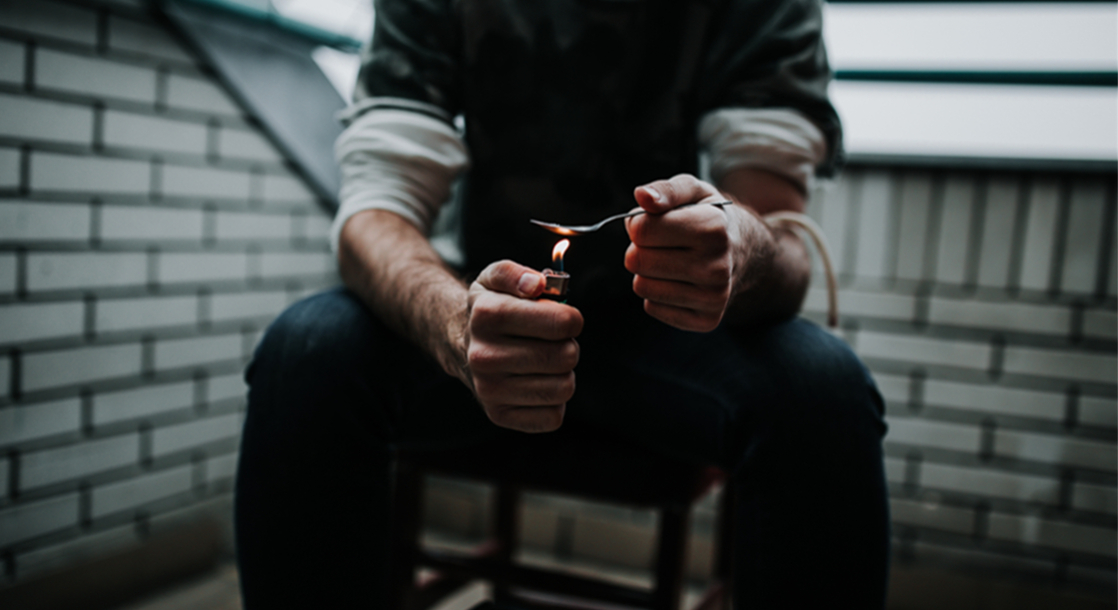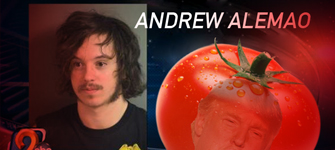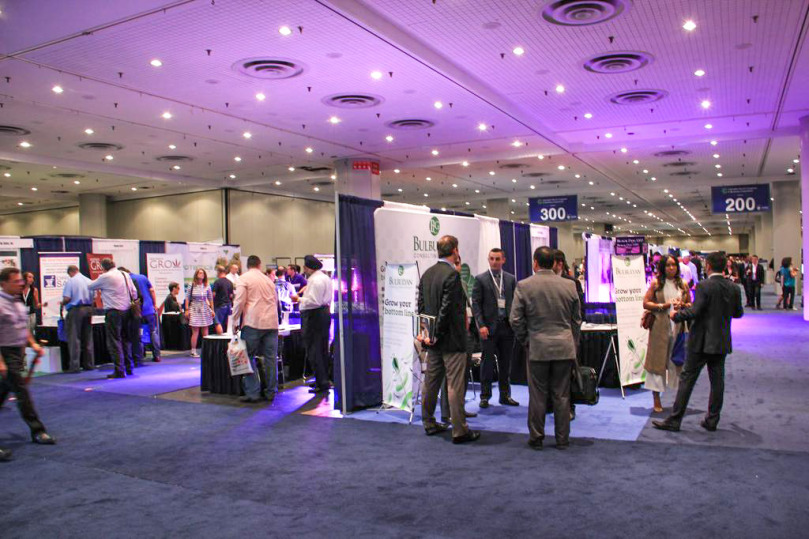Lead photo via iStock
The cop — one of three members present from the Vancouver Police Department — examined the small white box with clear doors on the front, trying to open it, until eventually he just picked the whole thing up and walked away with it, as his partners followed suit. In the box was weed, meant specifically for people who were addicted to opioids. It were being offered by the High Hopes program, run by the Vancouver Overdose Prevention Society (OPS) — a group of grassroots activists in Vancouver who provide harm reduction services to people who use drugs.
September 14 was a rainy Friday in Vancouver, B.C., where most Fridays — most days, really — are rainy. Police are a common enough sight in Vancouver’s Downtown Eastside neighborhood, where things usually hang in a sort of tenuous peace, even despite drug use that’s often quite public. The Downtown Eastside is the epicentre of Canada’s opioid crisis, to some degree, and police usually have bigger fish to fry than confiscating weed — especially only one month before legalization.
Those cannabis products, both flower and various edible items, in the box were meant for people who use opioids — a way for them to use something that won’t cause an overdose, and that can help them tolerate withdrawal symptoms.
“Good for you, guys, taking opiate replacement from people,” says Sarah Blyth, co-founder of the Overdose Prevention Society, as she follows the police out, recording a video. “Good job, guys.”
“Thanks Sarah!” says one of the cops.
“Marijuana is still illegal, Sarah, and you need a permit to sell it,” says the first cop. A second cop starts laughing in the background.
VPD just siezed cannabis replacement program #vanpoli walked right by fentany dealers with it #beyondthecall pic.twitter.com/lVWfoKfN3W
— Sarah Blyth (@sarahblyth) September 14, 2018
The program was an interesting one: it operated out of the Downtown Eastside street market, which emerged as a sort of community rallying point for a neighborhood that has long struggled with poverty and substance use. High Hopes had been running out of a booth at that street market, until the police came in and busted them; the group hasn’t been able to get it back up and running yet, according to Blyth.
The cops all seem to know Sarah Blyth; at least they do in Vancouver’s Downtown Eastside, where cops and harm reduction workers both saturate the streets. It’s ground zero for a progressive approach to harm reduction in Canada — that is, the idea that drug use should be treated from a health perspective rather than a criminal one, and should prioritize making drug use safer, rather than illegal. Touted harm reduction tools including supervised injection sites, opioid replacement, and strident calls for the complete decriminalization of all drugs as responses to spates of overdoses all have roots in Vancouver’s community of addicts. Drug dependence, overdose deaths, and poverty are all targets of cops and harm reduction workers alike, though they approach them in different ways.
Because of the differences in their tactics addressing Vancouver’s struggle with addiction, sometimes they play the part of each others’ enemies, even when that seems to miss the point. So the box of pot, meant to help drug users avoid an overdose, was put in the police car and driven away; no one was ever even charged.
This isn’t a dilemma limited to Vancouver: across Canada, nearly 4,000 people died of suspected overdoses last year, the overwhelming majority of them because of opioids like fentanyl, oxycontin, and heroin. It is a crisis consuming North America at large, and one without easy answers. The war on drugs has largely failed people who use them, and activists are calling for a variety of remedies: decriminalization of all drugs (as Portugal has done since 2001, with notable success); supervised injection sites; and opioid replacement therapies, like prescription heroin and marijuana.
There is serious interest in what cannabis can add to this equation, and many believe that it holds great promise in the fight against opioid addiction. In June, cannabis giant Canopy Growth Corp. announced that they were funding, to the tune of $2.5 million, “research into the potential utility of cannabis in addressing the overdose crisis.”
The word you hear most when you talk to researchers, experts, and just about anybody who studies cannabis is potential. The things we know for sure about cannabis are fewer than the things we know anecdotally about it; the quantitative knowledge of scientists studying cannabis is still playing catch-up, to a degree, with the qualitative knowledge of activists and cannabis consumers, whose experience of the plant is rooted in their direct experience.
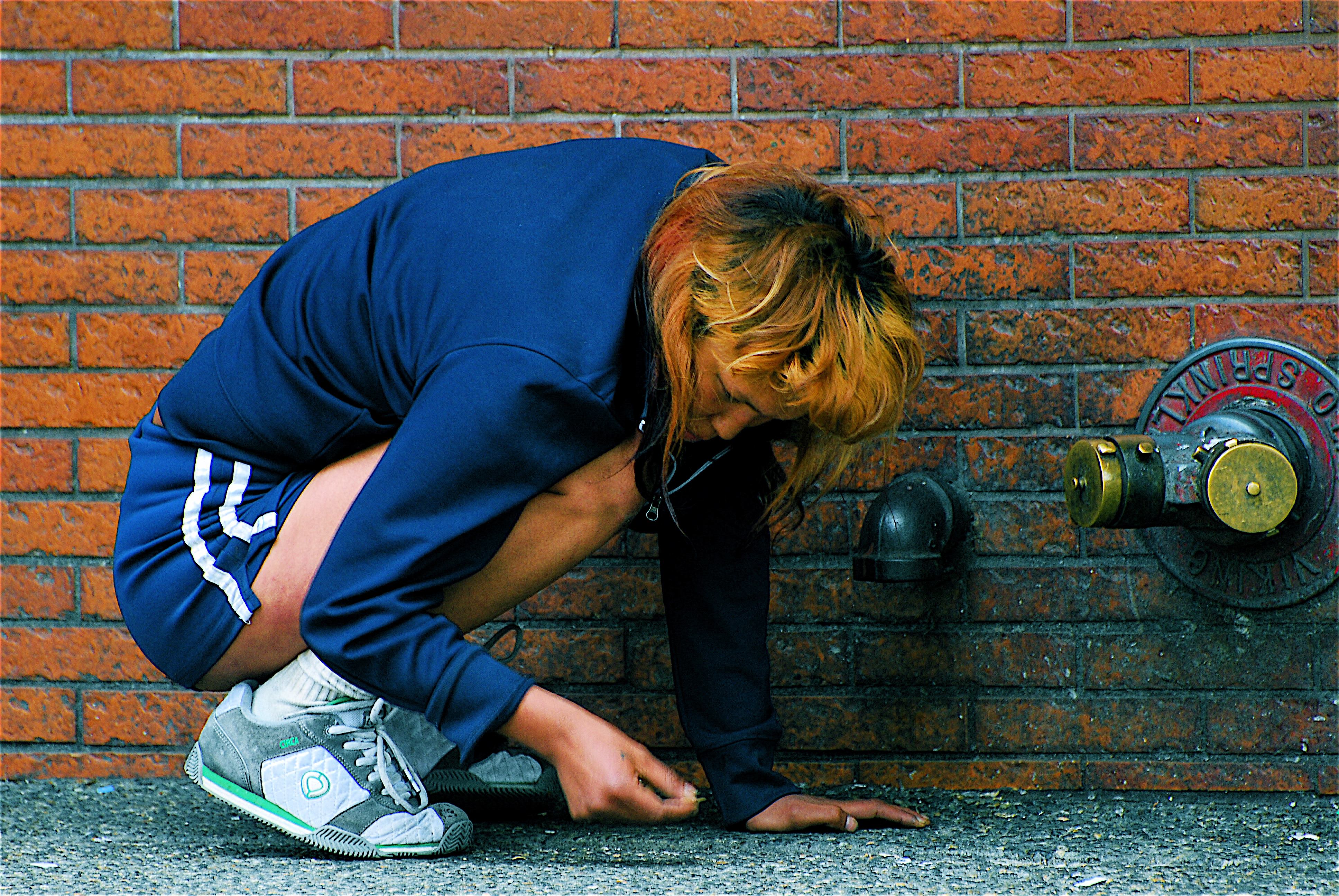
"Downtown Eastside – Searching for a Hit" by Patrick Doheny
For harm reduction workers on the frontlines of the opioid crisis, cannabis can be a major tool to help keep people from dying. One of the services that the OPS provides is a cannabis opioid-replacement program, which is pretty simple: they sell cheap weed (or in some cases give away free weed) to people who use opiates as a replacement substance; one that soothes their cravings without the mortal risks presented by use of heroin or fentanyl.
“The program was just there to operate seven days a week; to help people get safe access in the Downtown Eastside who were dying of overdoses,” Blyth tells MERRY JANE. “It was just another program that we had running. They got free, or very inexpensive, at-cost stuff.”
While the program wasn’t really at the core of what Vancouver OPS was doing, the loss of it is still the loss of something that did have a role in helping people who use drugs.
“We’ve noticed a huge difference in people able to deal with their trauma, their stress,” says Blyth. Many people who are dependent on opioids began using drugs because of pain or trauma, or as a way to escape the reality of life on the streets. Frontline harm reduction workers see cannabis as an alternative to cheap, readily available opioids. “If it’s getting rid of pain and it’s getting rid of trauma, those are the two problems. If you can get pain and trauma relief from something else in high doses, that’s not going to hurt you, and you can do it long term, it’s just a matter of switching.”
There’s more than one way that cannabis can be used to battle the overdose crisis. In the case of Blyth and the Vancouver OPS, it can be used to switch people who use dangerous opioids and onto the plant instead, even if they have no intention of ceasing drug use. It can also be used to help people who are trying to quit and are experiencing the severe withdrawal symptoms which stem from opioid abstinence. “It can cut the symptoms of withdrawal in half, so it’s bearable,” says Blyth. Cannabis can also be used in conjunction with traditional opiate replacement treatments, like methadone or suboxone. “A lot of people, I find, that are in recovery, they are looking for a way to keep on their recovery plan, or use it with suboxone so that they feel better,” says Blyth.
It can also have a place further upstream in a given individual’s healthcare. Many people who become dependent on opioids start with a trip to the doctor’s office, where they are prescribed something for pain. According to one study, over 650,000 opioid prescriptions are filled every day in the United States. “Enter cannabis,” write Esther Choo, Sarah Feldstein Ewing, and Travis Lovejoy, doctors at Oregon Health & Science University, in a 2016 paper in the Journal of the American Medical Association. “The mandated transition to limit use of opioids, paired with the current climate around liberalizing cannabis, may lead to patients’ formal and informal substitution of cannabis for opioids. Observational studies have found that state legalization of cannabis is associated with a decrease in opioid addiction and opioid-related overdose deaths.”
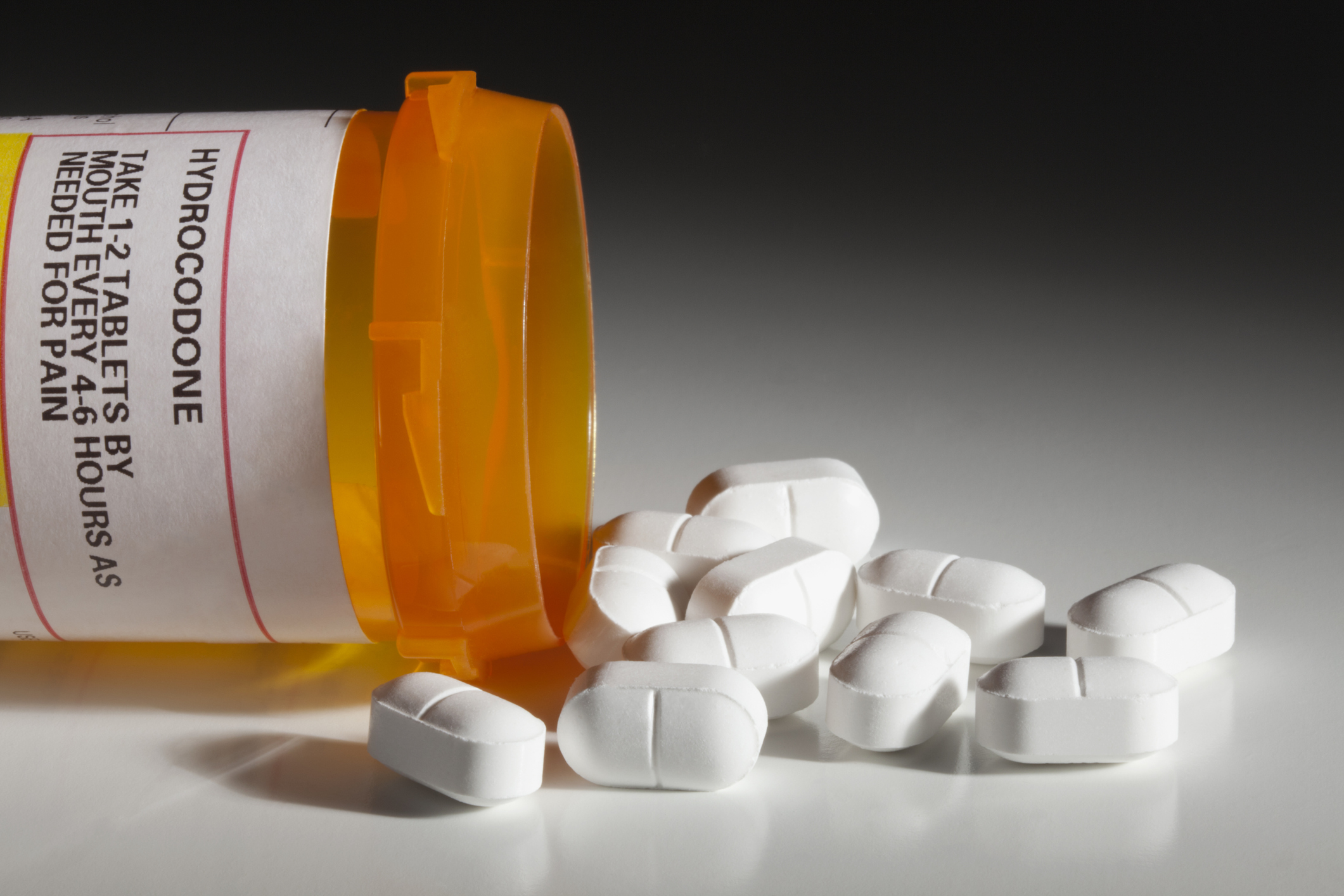
Provinces and states with legal cannabis are witnessing lower rates of opioid addiction and overdoses; photo via iStock
In Canada, the expansion of the medical cannabis system has allowed many patients who suffer from chronic pain to use cannabis, rather than opioids, to manage their pain. (Precise stats are hard to come by, but one 2017 study found that 45 percent of people who used cannabis for therapeutic purposes had also been prescribed an opioid in the past year.) Health Canada has not officially supported cannabis an an opioid replacement: A doctor could certainly prescribe cannabis to their patients as a substitute for opioids, but the government’s position in the information it communicates to doctors on cannabis’ possible “opioid-sparing effect” is that “results from clinical and epidemiological studies are mixed,” and that overall “evidence is mixed and requires further study.” (While the government doesn’t officially fund any cannabis opioid replacement programs directly, to the extent that medical cannabis is eligible to be claimed on one’s taxes and that some patients are prescribed it as an opioid alternative, it is likely that the government does subsidize this practice for qualified Canadians to some degree.)
In some sense, it’s natural that cannabis would be brought up in the same breath as opioids, since the two are often used to treat the same conditions. In a recent study of Hawaii’s medical cannabis system, Pono Life Sciences found that 85 percent of medical cannabis cardholders in the island state were using cannabis to treat chronic pain. “In 2016 a study published in the Journal of Pain found that cannabis use was associated with 64 percent lower opioid use,” reads the white paper.
On the front lines of what is by all accounts a public health crisis, these research findings confirm what many say they’ve experienced firsthand.
“I used opiates for years,” says Sean LeBlanc, a harm reduction worker in Ottawa who founded the Drug Users Advocacy League (DUAL) in 2010. He puts cannabis in up in the top three things that helped him kick his opioid habit. “When I have a craving, I can smoke a bit of a joint,” he says.
In 2017, LeBlanc, along with many of the city’s harm reduction workers, opened an unsanctioned supervised injection site in Ottawa’s Lowertown neighborhood, a part of the city where the homeless population is concentrated, less than a kilometre (about half a mile) east of Parliament Hill. The group, which went by the name Overdose Prevention Ottawa, were offering supervised consumption services when nobody else in the city was, and generated a somewhat bitter debate in the city about the legality, and morality, of harm reduction services.
LeBlanc’s advocacy work has led him to working with many people who use and are dependent on drugs, and he sees all the research into cannabis’ potential to assuage the opioid crisis as promising. “It’s so helpful,” he says. With “marijuana, people aren’t doing as much damage.”
Cannabis is not a perfect substitute for opioids, though. It will not, as LeBlanc puts it, help you much “if you’re dope sick” or going through detox. For some people using it, it may be in the same ballpark as the sensations from a depressant (as opposed to the high from stimulants like cocaine or meth), but it’s far from universal in the way it affects people. One of its major limitations is that it just isn’t as strong as an opioid, and so its ability to replace will only take patients so far.
Another limitation cannabis has — paradoxical to its apparent ubiquity — is that for those most marginalized, it is still very hard to access. I spoke to one harm reduction worker in Ottawa, who asked that she not be publicly identified because of her work, who said that cannabis being used to help decrease opioid addiction “won't become a reality here until a some key things change.”
Supervised injection sites are hailed by harm reduction workers as another way of preventing overdoses; photo via Vancouver Overdose Prevention Society
“The reality is that cannabis is out of reach for so many people in Ontario, and unless that changes, we may never have a chance to see the potential positive impacts. It can't help if people can't get it,” she said. She cited the high costs of legal cannabis, as well as the difficulty of access (in Ontario, for instance, you need a credit card and mailing address to buy legally) as barriers that are largest for the most marginalized. “Most community members who've talked to me about this have reiterated my earlier point, which is that it's not a realistic option here in Ontario.”
Marilou Gagnon, a harm reduction worker and nursing professor who helped found the group in Ottawa, says that they “were in discussions at some point to do a program like Sarah’s, High Hopes,” but that their site shut down (as a result of political pressure and colder weather) before they could make it happen. She still believes that cannabis can play a role in battling the overdose crisis. “I think overdose prevention sites are a good example of where that offer could happen,” she says.
“Cannabis works really well. We know that from the science, we know that from the anecdotes,” she adds. “We know that from the people who have lived experience, and we need to listen to them.”
It’s hard to say exactly what the best way to use cannabis in harm reduction is. Programs like High Hopes are more reactive, offering people who might otherwise be using opioids a direct alternative in the short term. For Blyth, it’s a matter of keeping people safe and offering them a safe supply of drugs. “Decriminalization is the biggest thing,” she says. “Decriminalization of some sort, or just getting safe access to drugs that are there that won’t kill you.”
Gagnon, on the other hand, focuses more on the way the medical system treats pain in the first place. “I think what we’re seeing is a crisis that has been created by a system that will put a priority on pills,” she says. “Really, I think cannabis offers that option as an alternative to pills. It should be part of our strategy right now, to turn to other ways” to manage pain.
Back in Vancouver, though, High Hopes remains shut down. The day after the original police raid, Vancouver police returned and warned the staff (mostly volunteers) that if they kept distributing cannabis, cops could start arresting OPS members. “It sucks, it’s stupid, and it could actually kill people,” says Blyth. She sees the raid by police as a “personal situation.”
“I think that it was kind of like, [the police] don’t like what we’re doing,” she says. But Blyth, and all the harm reduction volunteers she works with, still believe in their actions and intend to keep offering such services in the future. “We’re gonna do it. We’ll do it the way it should be done,” she says. “We’ll always be on the side of the people on the street.”


